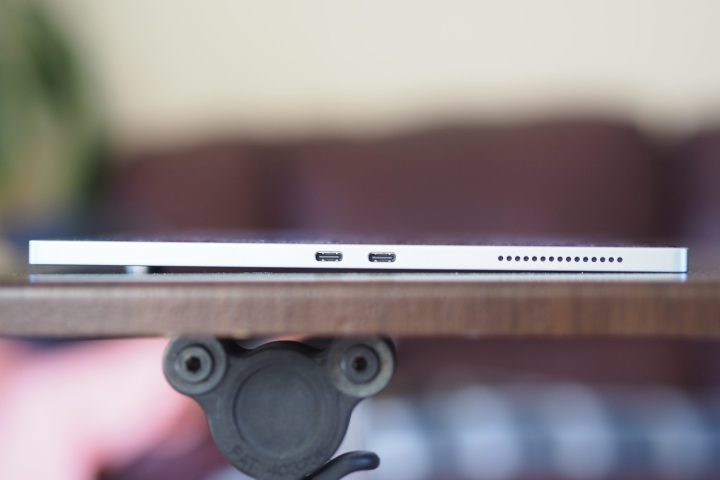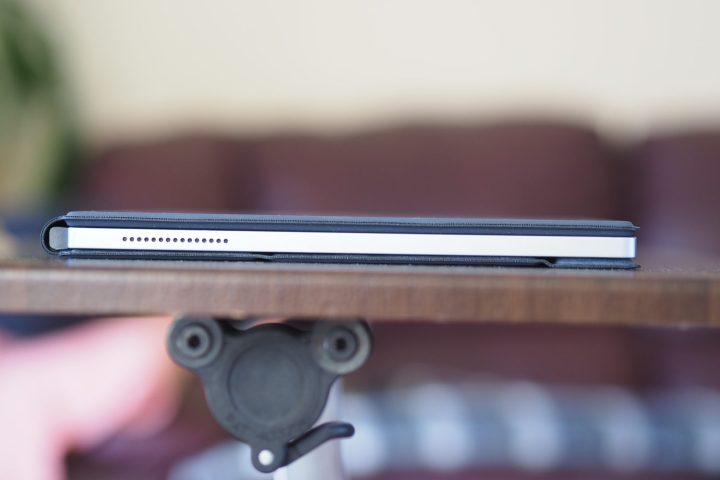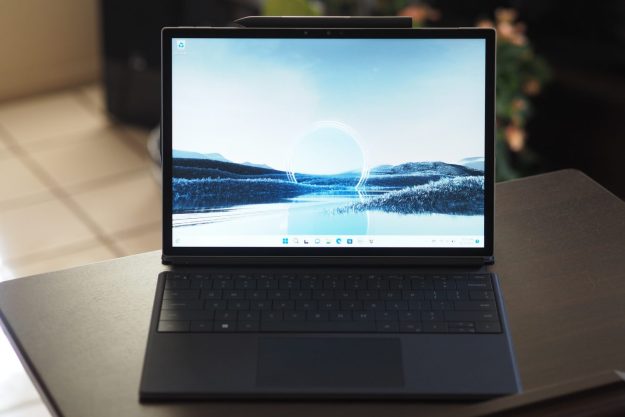
“The Dell XPS 13 2-in-1 provides competent productivity performance with a high-quality IPS display, but its battery life is mediocre and its inking experience can't live up to the best.”
- More affordable price
- Solid build quality
- Excellent productivity display
- High-resolution webcam
- Good productivity performance
- Folio has limited angles
- Keyboard lies flat
- No integrated kickstand
- No headphone jack
The detachable Windows tablet is making a comeback. It’s been years since we had some new designs in this category, which has been dominated by Microsoft’s Surface Pro line — but 2022 has seen the debut of some new models that hint at a comeback.
The new Dell XPS 13 2-in-1 (9315) might be the most substantial of the bunch, ditching the convertible form factor for something that aims to take on the Surface Pro 9 directly. The tablet’s late arrival means that Dell should have had plenty of time to optimize its design. So how did it do? Well, it’s a solid design with several welcome features, but it doesn’t do quite enough to stand out against the industry’s most iconic machine.
Specs and configurations
| Dell XPS 13 2-in-1 9315 | |
| Dimensions | 11.50 inches x 7.90 inches x 0.29 inches |
| Weight | 1.60 pounds Folio 1.23 pounds |
| Processor | Intel Core i5-1230U Intel Core i7-1250U |
| Graphics | Intel Iris Xe |
| RAM | 8GB LPDDR4x 16Gb LPDDR4x |
| Display | 13.0-inch 3:2 3K (2,880 x 1,920) IPS touch |
| Storage | 512GB PCIe SSD 1TB PCIe SSD |
| Touch | Yes |
| Ports | 2 x USB-C with Thunderbolt 4 Optional SIM slot |
| Wireless | Wi-Fi 6E and Bluetooth 5.2 |
| Webcam | 1080p from facing with infrared camera for Windows 11 Hello 2160p rear-facing |
| Operating system | Windows 11 |
| Battery | 49.5 watt-hours |
| Price | $999+ |
Price and configurations
The XPS 13 2-in-1 starts at $999 for a Core i5-1230U CPU, 8GB of RAM, and a 512GB SSD. My review unit came with the Core i5, 16GB of
That’s the same entry-level price as the Surface Pro 9, but Microsoft’s tablet is equipped with just 128GB of storage at the low end. The
A solid but less comfortable design
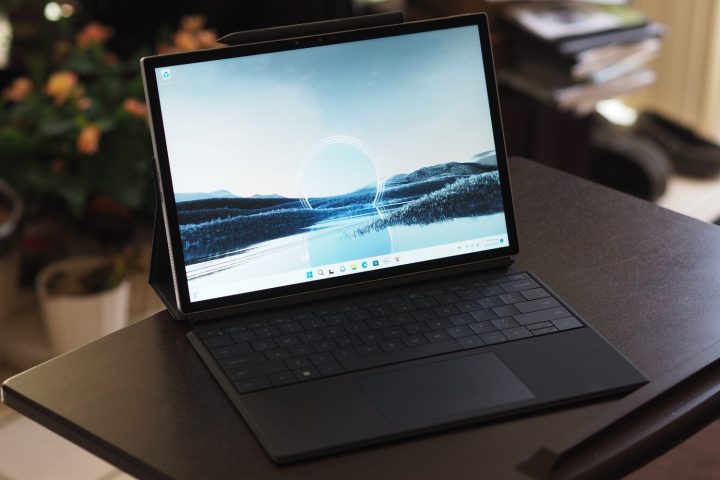
There are few computing products that so distinctly define a type as does the Microsoft
The
Dell’s tablet is a square design with sharper corners than the rounded-off Surface, and it enjoys smaller bezels around all its edges. You can pick between Sky (blue) or Slate (black) colors with the Wi-Fi version and Slate only with the
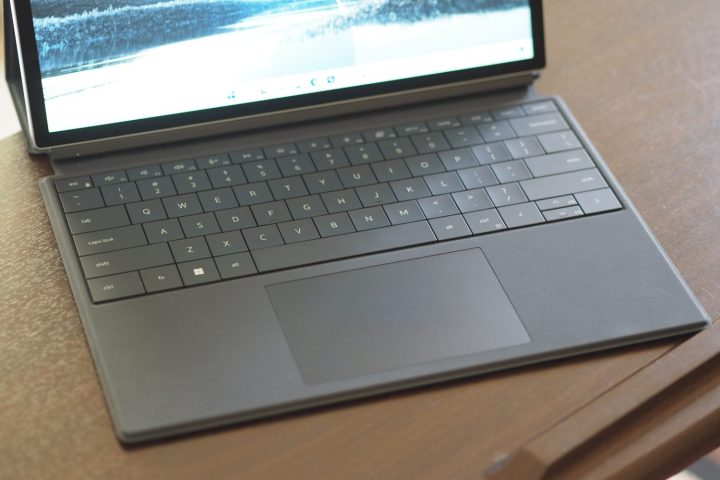
Another difference is with the folio itself. While the Surface Type Cover keyboard props up at an angle for more comfortable typing, Dell’s version only lies flat. The keyboard itself is fine, sporting an edge-to-edge keyboard with large keycaps that’s like the keyboard on the XPS 13 Plus, but it’s not as comfortable to use. The Surface Type Cover has a little bounce that the XPS 13 2-in-1’s keyboard avoids, but without an angle, my wrists got tired more quickly with the Dell. The touchpad integrated into the folio is excellent and offers quieter, more solid button clicks than Microsoft’s version.
The XPS 13 2-in-1 is thinner than the
Thanks to its thin chassis, the XPS 13 2-in-1 has just two USB-C ports with Thunderbolt 4, one of which is used for power. Like with the XPS 13 laptops, Dell dropped the 3.5mm audio jack from the tablet and instead offers a dongle in the box (along with a USB-C to USB-A adapter). Microsoft dropped the jack as well. The XPS 13 2-in-1 offers optional
Its get up and go got up and went
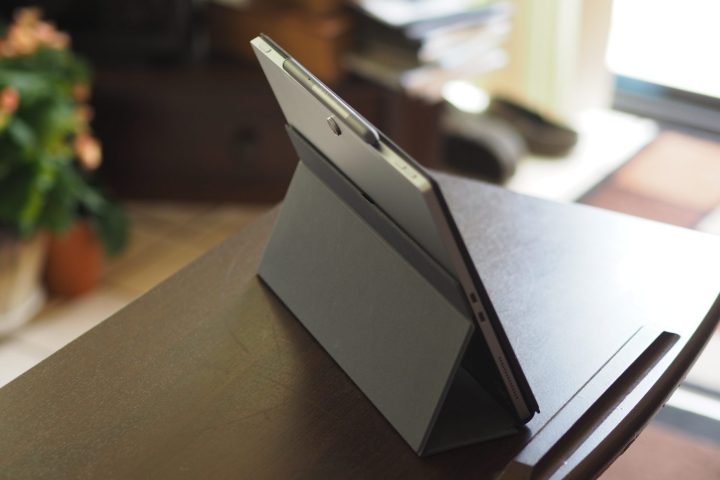
Outside of the Asus ROG Flow Z13, detachable tablets aren’t known for their performance. Even those running Intel CPUs rather than slower (and cooler, longer-lasting) ARM processors aren’t made for speed. The XPS 13 2-in-1 is a classic example, running Intel 9-watt 12th-gen CPUs. You can choose between the Core i5-1230U with 10 cores (two Performance and eight Efficient) and 12 threads and the Core i7-1250U with the same core count but running at 4.7GHz versus 4.4 GHz.
The
The XPS 13 2-in-1 is fanless and so completely silent. That limits its thermal performance, and it ran at low frequencies throughout our testing but didn’t officially throttle. The chassis was a little warm during extended high-CPU use, but it was never too hot to handle. Interestingly, the XPS 13 2-in-1 was faster than the Dell XPS 13 9315 with the same CPU in all but Cinebench.
In the end, the XPS 13 2-in-1 is fast enough for productivity workflows and will match the
| Geekbench (single / multi) |
Handbrake (seconds) |
Cinebench R23 (single / multi) |
PCMark 10 Complete |
|
| Dell XPS 13 2-in-1 9315 (Core i5-1230U) |
Bal: 1,435 / 6,099 Perf: 1,572 / 7,028 |
Bal: 139 Perf: 144 |
Bal: 1,064 / 3,032 Perf: 1,065 / 3009 |
4,535 |
| Surface Pro 9 (Core i7-1255U) |
Bal: 1170 / 6518 Perf: 1,598 / 8,165 |
Bal: 166 Perf: 127 |
Bal: 1124 / 7537 Perf: N/A |
4,045 |
| Dell XPS 13 9315 (Core i5-1230U) |
Bal: 1393 / 4,459 Perf: 1,477 / 5,350 |
Bal: 333 Perf: 192 |
Bal: 1379 / 3457 Perf: N/A |
4,023 |
| HP Spectre x360 13.5 (Core i7-1255U) |
Bal: 1,566 / 7,314 Perf: 1,593 / 7921 |
Bal: 169 Perf: 120 |
Bal: 1,623 / 5,823 Perf: 1,691 / 7,832 |
5,203 |
| Asus ROG Flow Z13 (Core i9-12900H) |
Bal: 1,784 / 9,387 Perf: N/A |
Bal: 103 Perf: 87 |
Bal: 1,548 / 9,664 Perf: 1,906 / 13,400 |
6,417 |
Despite its slightly larger battery (49.5 watt-hours versus 47.7 watt-hours) and lower-wattage CPU, the XPS 13 2-in-1 fell behind the

The XPS 13 2-in-1 is unlikely to get you through a full day’s work. The charger is small, though, so carrying it around isn’t too much of a burden.
Nice display quality, not as good for inking

The XPS 13 2-in-1 has a slightly smaller screen than the
In terms of quality, then, the XPS 13 2-in-1’s display is better for productivity users and just as middling for creators who demand the widest color gamut. But its refresh rate is a pedestrian 60Hz, compared to the
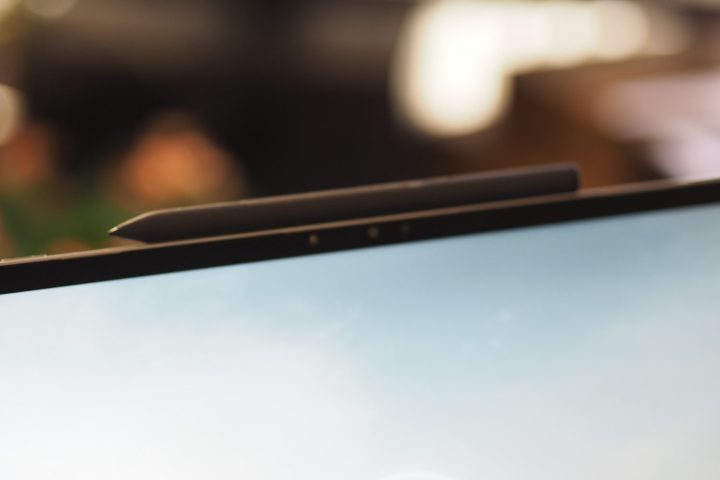
In terms of other multimedia aspects, the XPS 13 2-in-1 has an excellent 1080p front-facing camera and a 2160p rear-facing camera. There’s also an infrared camera for Windows 11 Hello passwordless login, like the
Back to the drawing board
The
Then again, price does matter. At the same $1,000 price, you get four times the storage with the XPS 13 2-in-1 than the
Editors' Recommendations
- Windows 10 Home vs. Pro vs. S mode: What’s the difference?
- The best HP laptops
- USB-C charging laptops: Here’s what you need to know
- The best tablets in 2023: top 9 picks you should buy
- Best laptop deals: Save on Apple, Dell, HP and Lenovo
